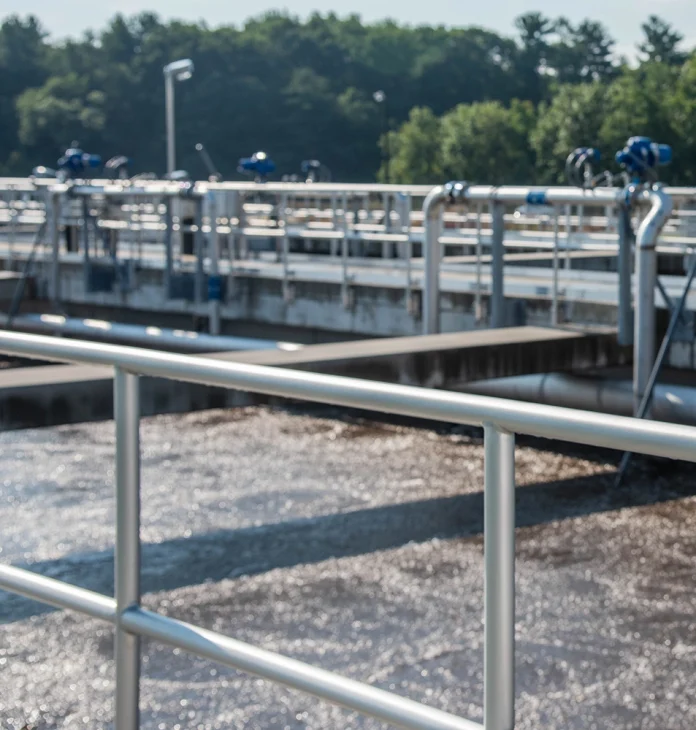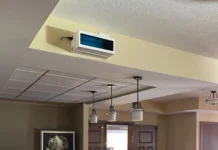Castine Bernardy, Ph.D. student, Civil and Environmental Engineering, University of New Hampshire; castine.bernardy@unh.edu
Bailey Jones, MS Student, Civil and Environmental Engineering, University of New Hampshire; bailey.jones@unh.edu
James P. Malley Jr., Ph.D., editor-in-chief of UV Solutions and professor of civil and environmental engineering, University of New Hampshire; jim.malley@unh.edu
We kick off this 2023 Operator’s Corner with the help of UV Solutions Editorial Board Member Harold Wright of Carollo Engineers. Wright led a Water Research Foundation benchmarking study – UV Disinfection Knowledge Base for Reuse Applications – Project 4764 (2020) and provided it to us for review. This Operator’s Corner revisits these key issues.
A component of Project 4764 was a visual inspection of the 16 participating UV facilities, which were located across the US. Those inspections noted the following operational issues: “The visual inspections identified issues that can occur with UV systems that should be addressed using regular maintenance. The issues include algae and biofilm buildup on the channel walls and reactor components; water in the quartz sleeves housing the lamps (which led to corroded lamp connections and internal sleeve fouling); darkening of the lamp envelope near the electrodes, with lamp aging, sleeve fouling, misaligned modules, misaligned wipers and damaged and worn wiper mechanisms.” Discussions during January 2023 with four UV facilities located near University of New Hampshire (UNH) treating wastewater with conventional and advanced biological nutrient removal prior to the use of UV systems indicate that routine maintenance is needed to alleviate most of these problems, with the most pervasive and recurring of them being algae and biofilm build-up (monthly), seal leakage on lamps that results in water entering the sleeves (several times a quarter) and wiper problems (annually).
Project 4764 also noted: “The audits indicate that the lamp aging and fouling with UV system operation often exceeds values specified by UV system manufacturers. One UV system using MP lamps aligned perpendicular to flow also showed significant end darkening with lamp aging. However, the lamps were monitored in the center, where the lamps were relatively clear.” Feedback from facilities reached by email or telephone in New England emphasized that cleaning of the sleeves to deal with fouling was a continuous process. These facilities did not have specifics on aging and fouling since they based performance on their required NPDES/SPDES discharge permit for fecal coliforms or E. coli and not on sensor readings.
On the topic of microbial monitoring, Project 4764 presented a very interesting finding from its benchmarking: “The UV dose-response of indicator microbes measured with the UV audits conducted for this work show that permit levels for the UV system effluents were met at UV doses well below the designed UV doses. With UV systems designed to meet a UV dose of 100 mJ/cm², the fecal and total coliform levels immediately downstream of the last bank of lamps often was below the detection limit of 0.22 CFU/100mL obtained using a 450 mL membrane filtration assay. However, the concentrations at the downstream weir or at a downstream location where the UV channels combined often was higher – in one case, by a factor of 380-fold.
It often is assumed that an increase in coliform counts after UV disinfection is caused by regrowth, the sluffing of biofilm from the channel walls or the release of particles from the channel floors as the flow increases with diurnal cycles. An alternate explanation for the increase is the bypass of untreated flow past the operating UV reactors, whether through a channel where the UV reactors were not operating and the gates leak, through a cross connect via floor drains (Wright et al. 2013) or via the short circuiting of flow through the UV system. Short circuiting may be related to misaligned modules or excessive water levels over the top lamps. To put bypass into perspective, “a bypass greater than 0.26 gpm is enough to prevent a UV system from achieving 5 log poliovirus inactivation with a 10 mgd flow, and a bypass greater than 5.3 gpm will result in coliform hits with a 50 mL assay if the UV influent has a coliform concentration of 10,000 CFU/100 mL.” Six wastewater facilities in New England reached by the column authors almost universally indicated that when their effluent samples showed an increase in fecal coliforms or E. coli, they normally could trace it to process upsets resulting in high TSS or decreases in the UVT of the treated effluent, which – for some systems – has become a recurring seasonal issue related to very low UVT (less than 50%) for the wastewater influent to these facilities.
Both the Project 4764 findings and the findings of UNH over the past three decades working with a variety of UV technologies treating conventional, biological nutrient removal and advanced wastewater facilities confirm that the routine operation and maintenance required for the UV facilities were more than originally anticipated. This comment or conclusion by operating staff often can be tied to the need for more cleaning in the UV facilities due to algae and biofilm build-up and, in a few cases, chemical precipitation (e.g., hardness and iron). It also is noted that electrical and mechanical maintenance can be higher than anticipated due to issues with lamps, connections, ballasts and wiper-related issues.
A second and more technical phase of the Project 4764 report dealt with process evaluation and the development of a set of tools to aid in evaluating the performance of UV systems. The report noted an interesting aspect of typical SCADA information collection: “The evaluation of SCADA data indicates that facilities do not record all the information needed to evaluate UV system performance. SCADA should collect information on channel flows, UVTs, bank ballast power settings, bank lamp hours, bank UV intensity sensor readings, UV dose delivery and any other information that impacts UV dose delivery, such as water level. In many cases, the SCADA data evaluated was very noisy and showed issues, such as UV intensity sensor saturation. The UV sensor signals showed short- and long-term trends. Short-term trends often correlated with UVT.”
The report continued: “UV intensity sensor readings depend on UVT, lamp power settings, lamp aging, fouling and UV sensor accuracy. The ratio of the measured values divided by values predicted using a UV sensor equation can be used to predict the combined lamp aging and fouling factor, which can be used for identifying when maintenance is needed to address low lamp output. The UV sensor equation often is provided in a validation report but can be developed using onsite testing.”
Regional experience based on January 2023 discussions suggests that this finding is consistent with many current operations. It also was pointed out that the additional collection and use of SCADA data related to UV could be very valuable if there were significant incentives to do so or if it were required for typical operating permits. This presently is not the case from what the column authors could find when talking to facilities in New England.
Thank you to Harold Wright and the Water Research Foundation for producing this benchmarking study and report. Interested owners and operators reviewing the information in this article are encouraged to reach out to the Water Research Foundation for a copy of the full benchmarking report.






